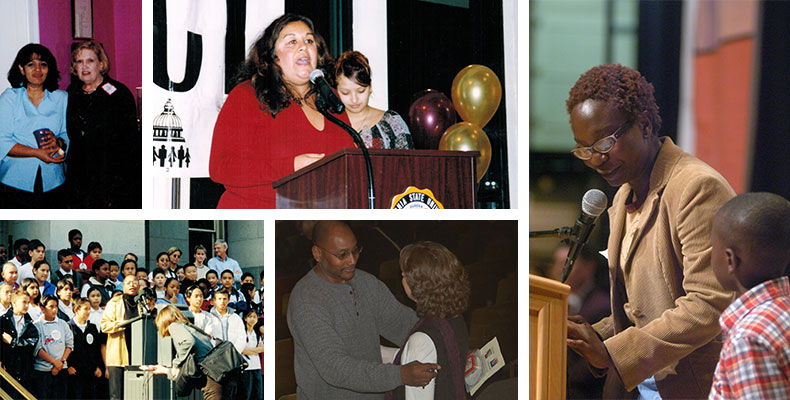Lessons from Community Organizing
PTHV was born from community organizing. For some, community organizing conjures up images of big marches, charismatic leaders making compelling speeches, and messages that challenge the status quo.
No doubt, these are some of the more public-facing aspects of community organizing. But behind the public demonstrations are the day-to-day actions that build community, develop a shared vision, and create space to practice power. PTHV’s founding included the big public-facing actions, but after 25 years, PTHV still draws on those small yet powerful day-to-day mindsets and actions to help sustain it into the future.
Here are three community organizing practices that were instrumental in creating PTHV and continue to shape it today:
Listen Well.
When PTHV founding parents decided to talk with their neighbors 25 years ago, they were uncertain whether neighbors would feel comfortable sharing their concerns. But once they started listening to one another, they discovered that they were not alone. Almost all of them felt unwelcome in the schools, and far too many of their children were struggling academically. These experiences cut across race, economics, and formal education. When they started listening, they realized that the school district had failed the entire community for a generation or more. No longer feeling lonely and isolated, families and community members sought solutions and created one in the form of PTHV.
Today, PTHV home visits continue to be a vehicle for building trust, creating community, and surfacing concerns that families and schools can address together. They create a space where families and educators listen to each other, see each other’s humanity, and break down barriers that might have kept them apart. It’s the space where mutual understanding begins.
Embrace Power.
Power is a good thing; exercising our power allows us to change the world. Yesenia Ramirez, PTHV Founding Parent, recalls that she and her community first exercised their power to get street lights near the school, repair school roofs and parking lots, and remove abandoned cars from the neighborhood. These actions cracked open the window just enough for them to leverage their power to address the deeper issue of mistrust between the community and the schools and to give birth to PTHV.
Mired under the weight of institutional bureaucracy, parents often feel powerless to realize their greatest hopes and dreams for their children’s education. When educators do home visits, families begin to see that they have an ally – a partner with whom they can problem-solve, brainstorm key questions, and identify important information to gather. Families begin speaking their voices to support and advocate not only for their own children but for all children in the community. They, along with teacher partners, begin to exercise their power at individual, community, and systems levels. In doing so, they bring new and important voices to public decision-making processes.
Seek Peace.
When Yesenia realized that she wasn’t alone and that the entire community was mutually supportive, a feeling of calm and peace washed over her. Sound strategy, support, planning, and a focus on a big vision assured Yesenia and others that they could change schools and improve the lives of their children. Though there will likely be moments of tension in any organizing process, when done well, the relationships that emerge from them often serve as a healing salve to the historical wounds that communities have endured.
Schools can leverage home visits to seek peace by honoring the experiences and wisdom that families bring. By recognizing families as co-equal partners in the education of children – both at the family level and school-wide – schools can have thought partners to co-create strategies and plans that will allow them to live into their shared vision. When families and schools are on the same page, they can engage in healthy cycles of change, growth, and healing.

